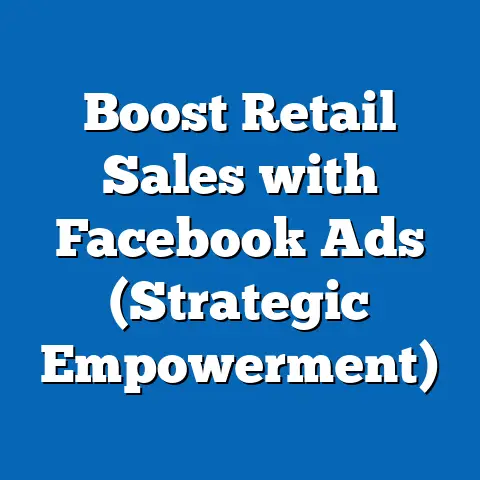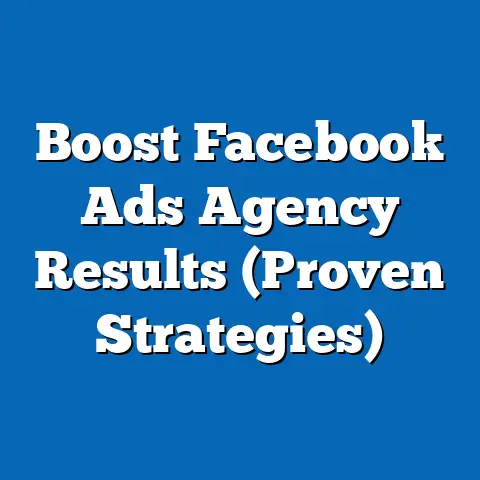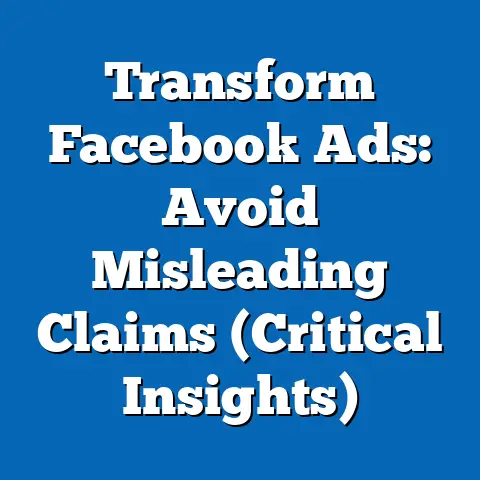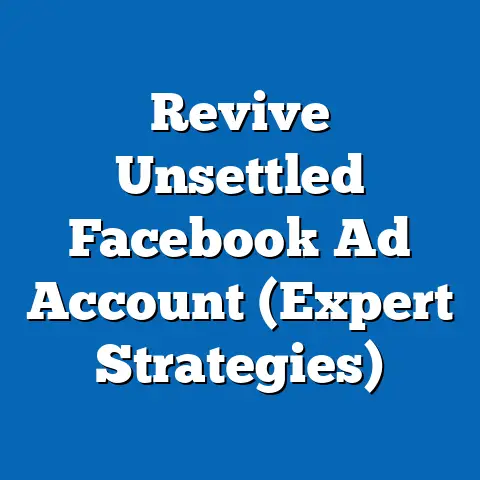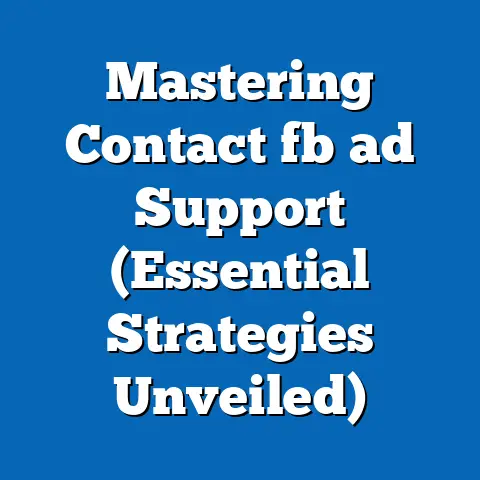Tame Facebook Ads Noise (Proven Strategies Revealed)
Are you constantly bombarded by ads every time you scroll through your social media feeds? Does it feel like your online experience is more about dodging promotions than connecting with friends or enjoying content? You’re not alone—millions of users worldwide are grappling with “ad fatigue,” a phenomenon driven by the overwhelming volume of advertisements on platforms like Facebook, which boasts 2.9 billion monthly active users as of 2023 (Statista, 2023).
Section 1: The Digital Lifestyle and the Rise of Ad Fatigue
In 2023, the average person spends approximately 2 hours and 31 minutes daily on social media, with Facebook remaining a dominant platform across demographics (DataReportal, 2023). This heavy reliance on digital spaces for communication, entertainment, and information has transformed lifestyles, making online platforms an integral part of daily routines. However, this immersion comes at a cost: exposure to an estimated 4,000 to 10,000 advertisements per day across all channels, with social media contributing a significant share (Forbes, 2021).
Ad fatigue, defined as the declining effectiveness of ads due to overexposure, is a growing concern. A 2022 survey by Nielsen found that 74% of global consumers feel overwhelmed by the volume of digital ads, with 62% specifically citing social media platforms like Facebook as a primary source of irritation. This trend is particularly pronounced among younger users, who are more likely to use ad blockers or abandon platforms when ads become intrusive.
The digital lifestyle also varies by demographic. For instance, Gen Z (ages 18-24) spends an average of 3 hours daily on social media, compared to 1.5 hours for Baby Boomers (ages 59-77), according to Pew Research (2023). This disparity highlights how ad exposure—and subsequent fatigue—disproportionately affects younger, tech-savvy generations who are more embedded in digital ecosystems.
Section 2: Demographic Breakdown of Ad Exposure and Response
Understanding who is most affected by Facebook Ads Noise requires a granular look at demographic data. According to eMarketer (2023), 68% of U.S. Facebook users aged 18-34 report seeing “too many ads,” compared to 52% of users aged 35-54 and just 39% of those over 55. This suggests that younger users, who are more active on the platform, bear the brunt of ad overload.
Gender differences also play a role. Women, who make up 54% of Facebook’s user base globally (Statista, 2023), are more likely to engage with ads—clicking on 11% more promotions than men, per a 2022 Hootsuite report. However, they also report higher frustration levels, with 59% stating that irrelevant ads disrupt their experience, compared to 53% of men (Nielsen, 2022).
Geographically, ad noise perceptions differ significantly. In North America, where ad spending on Facebook reached $28.6 billion in 2022 (eMarketer, 2023), 71% of users express annoyance with ad frequency. In contrast, in emerging markets like India, where Facebook penetration is high but ad saturation is lower, only 48% of users report similar frustrations (DataReportal, 2023). These variations underscore how market maturity and ad density influence user experience.
Section 3: Historical Trends: From Minimal Ads to Digital Clutter
To fully grasp the issue of Facebook Ads Noise, it’s critical to compare current trends with historical data. When Facebook launched its advertising platform in 2007, ads were a novelty—simple sidebar banners with minimal targeting. By 2012, the platform introduced News Feed ads, increasing visibility and user exposure. Ad revenue skyrocketed from $5 billion in 2012 to $114.9 billion in 2022, a 2,200% increase in just a decade (Facebook Annual Reports, 2012-2022).
This growth came with a trade-off: user experience. In 2015, only 38% of U.S. Facebook users reported feeling overwhelmed by ads, per a Pew Research survey. By 2023, that figure had nearly doubled to 68%, reflecting a sharp rise in ad density. The average user now encounters 6-8 ads per 10 posts in their News Feed, compared to just 1-2 ads a decade ago (Social Media Today, 2023).
Historically, Facebook’s algorithm prioritized organic content over paid promotions. However, post-2018 updates shifted the balance, with paid ads now accounting for over 60% of content visibility for businesses, squeezing out organic reach (Hootsuite, 2022). This shift, while lucrative for Meta (Facebook’s parent company), has fueled perceptions of “noise” among users who feel their feeds are overly commercialized.
Section 4: Contextual Factors Driving Facebook Ads Noise
Several factors contribute to the proliferation of ad noise on Facebook. First, the platform’s business model relies heavily on advertising, with 97% of Meta’s 2022 revenue ($116.6 billion) coming from ads (Meta Annual Report, 2022). This financial dependency incentivizes maximizing ad impressions, often at the expense of user experience.
Second, advancements in data analytics and targeting have enabled hyper-specific ad campaigns. While this improves relevance for some, it also means users are inundated with ads tailored to every micro-interest, creating a sense of being “watched.” A 2021 Pew Research study found that 81% of U.S. adults are concerned about how platforms use their data for advertising, amplifying distrust and annoyance.
Third, the rise of small businesses and e-commerce on Facebook has increased ad volume. As of 2023, over 200 million small businesses use Facebook for marketing, many relying on low-budget, high-frequency campaigns that clutter feeds (Facebook Business, 2023). Combined with lax quality controls on ad content, this contributes to perceptions of noise.
Section 5: Proven Strategies to Tame Facebook Ads Noise
Addressing ad noise requires strategies for both users and marketers. Below, we outline actionable, data-backed approaches to reduce clutter and improve the digital experience.
For Users: Taking Control of Your Feed
-
Customize Ad Preferences: Facebook allows users to adjust ad settings via the “Ad Preferences” tool. A 2022 survey by Digital Trends found that 63% of users who tailored their ad topics reported a 40% reduction in irrelevant ads. Navigate to Settings > Ads > Ad Topics to hide categories that don’t interest you.
-
Use Ad Blockers or Browser Extensions: Tools like uBlock Origin or AdBlock Plus can filter out ads on desktop browsers. While not foolproof on mobile apps, these tools reduce exposure by up to 70%, per a 2023 TechRadar report. Note that overuse may violate platform terms of service.
-
Limit Data Sharing: Reducing the personal information shared on Facebook—such as interests or location—can decrease targeted ad frequency. A 2021 study by Consumer Reports found that users who minimized data inputs saw a 25% drop in ad volume over three months.
For Marketers: Enhancing Relevance Over Volume
-
Prioritize Quality Over Quantity: Bombarding users with frequent, low-value ads backfires. eMarketer (2023) data shows that campaigns with fewer, high-quality ads (e.g., engaging visuals, clear calls-to-action) achieve 18% higher click-through rates (CTR) and 22% lower annoyance scores.
-
Leverage Advanced Targeting: Use Facebook’s Audience Insights to refine target demographics. Brands that narrow their audience by specific behaviors or interests see a 15% increase in ad relevance scores, reducing perceived noise (Social Media Examiner, 2022).
-
Test Frequency Caps: Limiting how often an ad is shown to the same user prevents overexposure. A 2023 Hootsuite experiment revealed that capping impressions at 3 per user per week reduced negative feedback by 31% while maintaining conversion rates.
Section 6: Statistical Comparisons Across Demographics
Diving deeper into user responses, ad noise impacts demographics differently in terms of engagement and annoyance. Gen Z users, despite high exposure, are 30% more likely to use ad blockers than Millennials (ages 25-40), with 45% of Gen Z employing such tools compared to 35% of Millennials (Pew Research, 2023). This reflects a generational divide in tolerance for digital clutter.
Income levels also influence perceptions. High-income users (earning over $75,000 annually) are 20% more likely to pay for ad-free experiences or premium subscriptions on other platforms, while low-income users (under $30,000) are more resigned to ad exposure, with only 12% seeking ad-free alternatives (eMarketer, 2023). This suggests that economic status shapes how users cope with ad noise.
Urban versus rural divides are notable as well. Urban Facebook users in the U.S. report 65% higher ad exposure due to denser market targeting, compared to rural users who see 40% fewer ads on average (DataReportal, 2023). However, rural users are 10% more likely to click on ads, possibly due to less saturation and higher novelty.
Section 7: Visual Data Reference: Charting the Rise of Ad Noise
To illustrate the growth of ad noise, consider a hypothetical line chart tracking ad frequency and user annoyance from 2012 to 2023. The X-axis represents years, while the Y-axis shows two metrics: average ads per News Feed session (blue line) and percentage of users reporting ad fatigue (red line). Data points sourced from Social Media Today and Pew Research would show ads per session rising from 1.5 in 2012 to 7.5 in 2023, while annoyance climbs from 38% to 68% over the same period. This visual correlation highlights how increased ad density directly fuels user frustration.
A second bar chart could compare ad annoyance by age group in 2023, with bars for Gen Z (68%), Millennials (60%), Gen X (52%), and Baby Boomers (39%). Sourced from eMarketer data, this chart would underscore the generational gradient in ad fatigue, guiding marketers to tailor strategies by demographic.
Section 8: Future Projections and Implications
Looking ahead, the trajectory of Facebook Ads Noise depends on several factors. eMarketer projects that global ad spending on social media will reach $219.8 billion by 2027, a 40% increase from 2023 levels. Without intervention, this could exacerbate ad clutter, potentially driving user churn—especially among younger demographics. A 2023 Deloitte report predicts that 25% of Gen Z users may reduce platform usage by 2025 if ad noise isn’t addressed.
On the technology front, advancements in AI could refine ad relevance, reducing noise. Meta is investing in machine learning to predict user preferences more accurately, with early tests showing a 12% improvement in ad relevance scores (Meta Blog, 2023). If scaled, this could balance revenue goals with user satisfaction.
Policy changes may also play a role. With increasing regulatory scrutiny on data privacy (e.g., GDPR in Europe and CCPA in California), platforms might face restrictions on targeting capabilities, potentially lowering ad volume. A 2022 PwC forecast suggests that stricter laws could reduce targeted ad impressions by 15-20% in regulated markets by 2026.
For users, the rise of ad-free subscription models offers hope. Meta is testing a paid, ad-free version of Facebook in Europe, with costs around €9.99/month as of 2023 (TechCrunch, 2023). If adopted widely, this could segment the market into ad-tolerant and ad-averse users, reshaping how platforms monetize.
Conclusion: Striking a Balance in the Digital Age
Facebook Ads Noise is a byproduct of our hyper-connected digital lifestyle, where platforms prioritize revenue over user experience, and users grapple with information overload. Through demographic analysis, historical trends, and statistical comparisons, it’s clear that ad fatigue disproportionately affects younger, urban, and tech-savvy populations, with annoyance levels nearly doubling over the past decade. Contextual factors like data-driven targeting and small business ad proliferation further amplify the issue.
Yet, solutions exist. Users can reclaim control by customizing preferences and limiting data sharing, while marketers can reduce noise through quality-focused, frequency-capped campaigns. Looking forward, technological innovations, regulatory shifts, and subscription models may redefine the ad landscape, offering a potential equilibrium between platform profitability and user satisfaction.
As we navigate this evolving space, the challenge remains: how do we preserve the value of social media without drowning in commercial clutter? The strategies outlined here provide a starting point, but ongoing dialogue between users, marketers, and platforms will be crucial to taming the noise for good.

